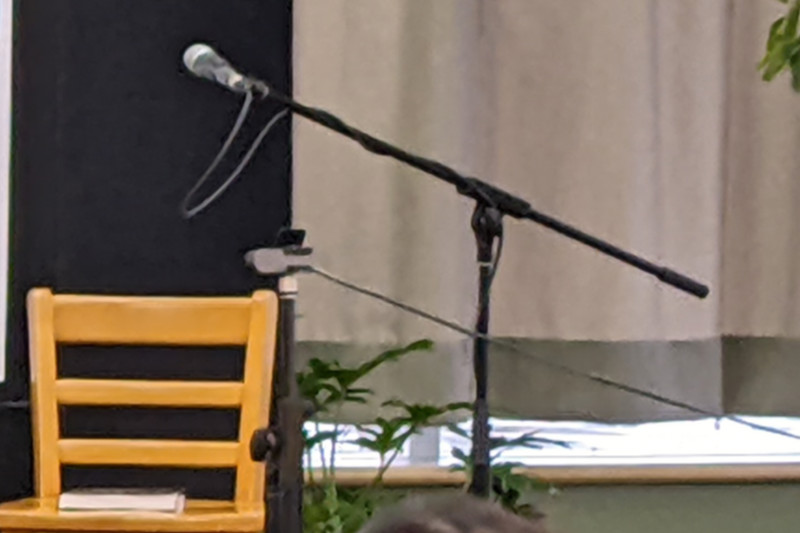Last month I attended a Story Slam (as a spectator, not a participant).
You may or may not have heard of story slams, but chances are you have heard of poetry slams. At a poetry slam, poets perform spoken word poetry in front of a live audience and a panel of judges. According to Britannica, poetry slams began in Chicago in the 1980s when poet Marc Kelly Smith created weekly poetry events where everyone could participate. The idea was to bring poetry back to the people.
Story slams are a similar event, but with personal storytelling instead of poetry.
The Story Slam I attended featured 10 storytellers. Upon entering the event, those wishing to share a story signed up. Fourteen people had signed up on this particular evening. All names were placed in a hat. Before each storytelling session, a name was drawn from that hat.
There was a theme, which had been publicized ahead of the event. Storytellers were free to interpret that theme as they wished, but the story had to be personal, true, and unpublished. They could read their story from their phone or written or typed notes. Or not and talk from memory or off-the-cuff. The time limit for each story was five minutes.
The scoring method was the same as that used in the original poetry slams. Five random volunteer audience members were chosen as judges. They scored each storyteller on a scale from 1 to 10 with one decimal point allowed. They used whatever criteria they wished—criteria they did not need to divulge or share. The highest and lowest scores were discarded. The remaining three were totaled. There was a timekeeper. Storytellers were given 10 seconds grace beyond the five minutes before starting to lose points based on the amount of time they went beyond the five minutes.
The stories were funny and moving. The stories were personal, sometimes intensively so. The stories were heartbreaking and heartening. They made for a very pleasant evening. So pleasant, in fact, that I returned for this month’s event–again as a listener, not as a storyteller.
The events have left me with thoughts about the art of oral storytelling and the importance of our stories.
Oral storytelling is not simply reading a written story aloud. In a written story, the words need to somehow convey tone and attitude. In oral storytelling, the teller’s voice and body language can do that. They can also augment the story. A more conversational style creates a connection with the listeners. Pauses and gestures become important punctuation marks. Long, descriptive sentences that may work well in a story meant to be read can fall flat in oral storytelling. Repetition of words, something a writer putting a story down on paper tries to avoid, can be effective in oral storytelling as the style more closely matches how one might speak. An oral storyteller actively engages the audience, reacts to their responses, and adjusts how the story is told accordingly.
In short, storytelling is an art, an art that dates back to ancient times. Storytelling has entertained, inspired, and kept culture alive. Today, sharing our stories creates connections between people and fosters greater understanding. At the story slams, I identified with experiences similar to ones I’d had, learned about aspects of life outside of my own experience, empathized with what others had gone through, and gained new perspectives.
I have often said that everyone has a story. After spending time at the story slams, I’ll revise this to say everyone has many fascinating stories to tell in their own unique ways. Sharing our stories and taking time to listen to others’ stories fosters greater understanding of each other and broadens our knowledge. It is also a fun way to spend a cold winter evening.

Be First to Comment